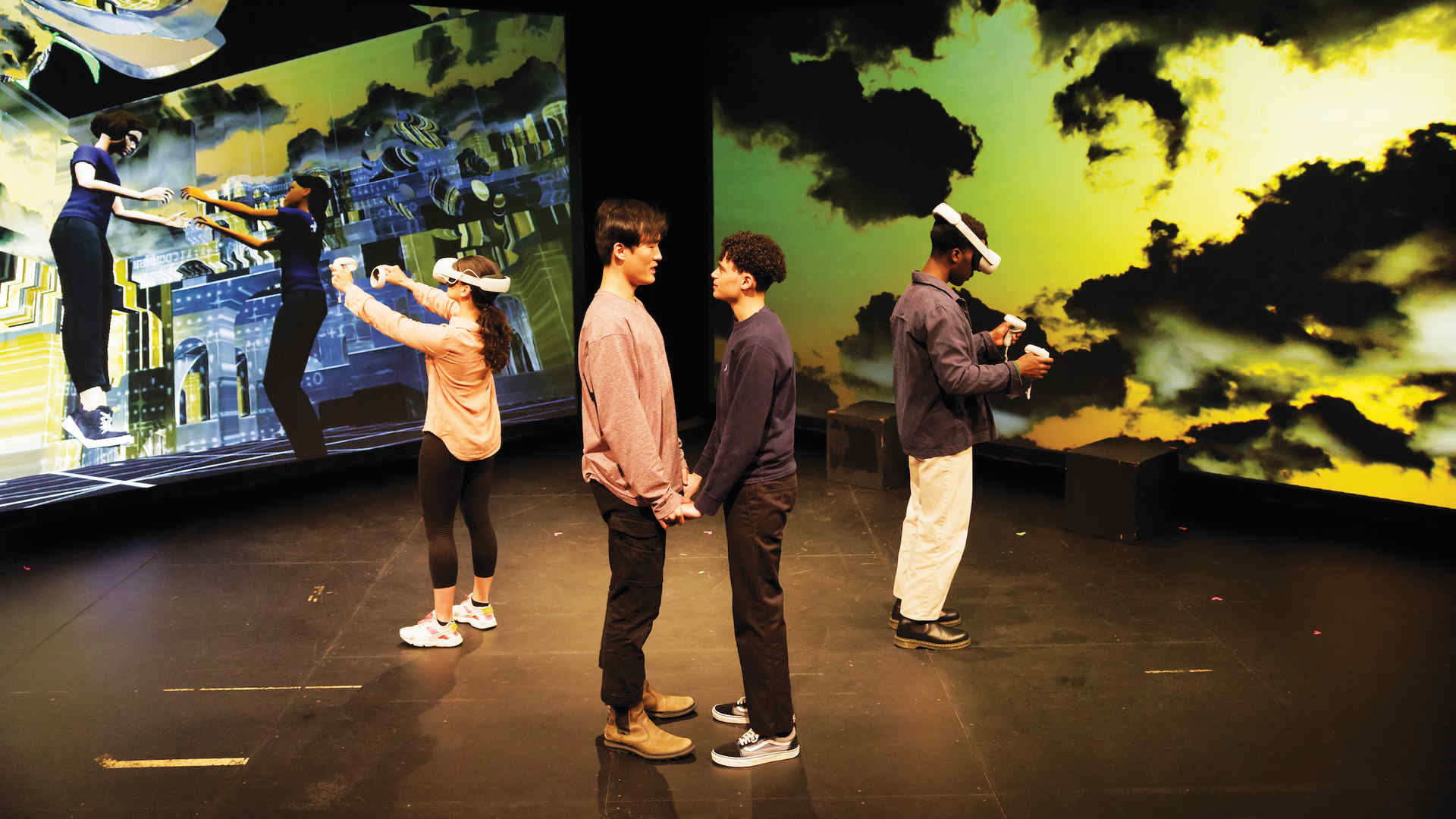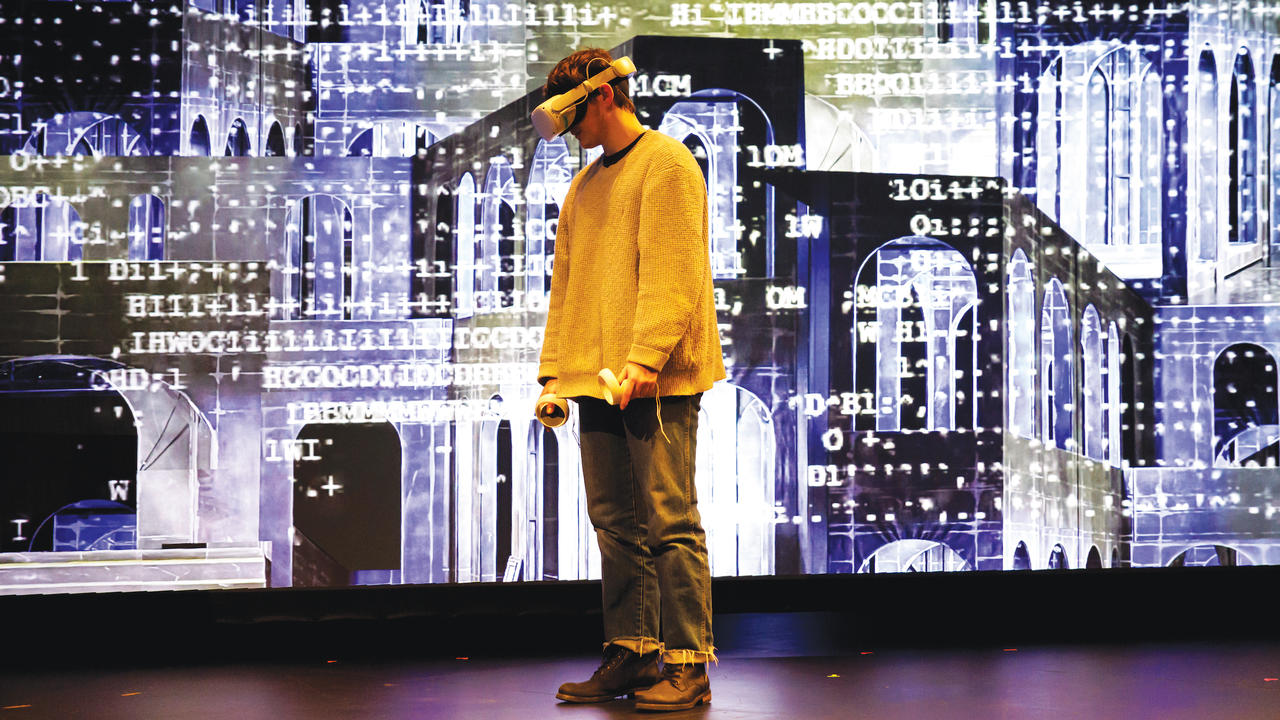
Builders Association intensive lets students explore virtual reality onstage
In January, Juilliard welcomed Creative Associates group the Builders Association to the school to lead a weeklong workshop with a dozen Drama Division students in their second, third, and fourth years of training. Since its founding in 1994, this cross-media performance company has been working to find ways to incorporate new technologies into theatrical spaces and examine the impact of media on culture and community. This year, the Builders Association became the first performance company to be part of Juilliard’s Creative Associates program, in which artists whose work exemplifies collaborative and interdisciplinary innovation have residencies at the school.
During the Builders’ intensive, team members worked with Juilliard students to explore virtual reality onstage, with the help of headsets, a team of technicians, and lots of creative collaboration. The students, most of whom entered the workshop knowing very little about this technology, left having created a series of short pieces that allowed them to explore interactions in both physical and virtual reality spaces. One of them, Kassandra Norymar Cruz Cuberos, reflected on her experience.
By Kassandra Norymar Cruz Cuberos
During our week with the Builders, my classmates and I were faced with the question of how to approach theater on a proscenium stage through the lens of technology. Virtual reality is a piece of technology designed to be experienced by individuals in the privacy of their home and, like most technology, it often disregards the use of the body in physical space. In contrast, theater is an embodied, communal practice in a shared physical space. Our primary goal was to investigate how virtual reality can coexist within a “live” theater space in a compelling way.
We began the week by developing an understanding of the technology and exploring its current uses in the world and the performing arts. We learned how Oculus goggles work since most of us had never used virtual reality headsets before. My first experience was incredibly fun but also very disorienting. Like most interactions with new technology, there is the seductive nature of how cool the possibilities could be but also the potentially negative impact on our humanity and ability to connect with one another.

We then began to explore ways to stage an adapted scene from Edmond Rostand’s Cyrano de Bergerac. We used the scene in which Cyrano steps in unseen to speak for a young man who is trying to woo the woman Cyrano loves, since it seemed well suited to exploring the question of the layers and masking of identity so central to the virtual reality space. Onstage, there were two screens projecting what the actors were seeing through their headsets as they performed and maneuvered their virtual avatars. The fun part about staging the scene was collaborating in real time with all the technicians in the room, especially with the sound and video designers. Often in a traditional process, the actor does not get to see all the other elements of the production design until tech week. But with the Builders, we worked in a devised collaborative process with everyone involved, and we took the time to explore all the elements together.

Part of the process was experimenting with all sorts of possibilities and deconstructing the elements of virtual reality. These produced some wonderful ideas that disrupted how this technology was intended to work. For example, we were interested in the technology’s ability to track movement, so we experimented with how we could split the handheld controllers between multiple users while a third actor wore the headset on his shoulder. When the virtual avatar was being controlled by three people instead of one, it created a piece that was compelling to watch on stage and on screen, as it resulted in the avatar and actors working in synchronized, dancelike movements.
Performing in this medium challenged me to expand my capacity as an actor. I was no longer working entirely off another human being; I was interacting with a screen or talking to a fellow actor through a VR headset. It was incredibly challenging to use the technology and still be able to perform, yet to do so felt like a leap into the future.
Kassandra Norymar Cruz Cuberos is a third-year master’s student in the Drama Division